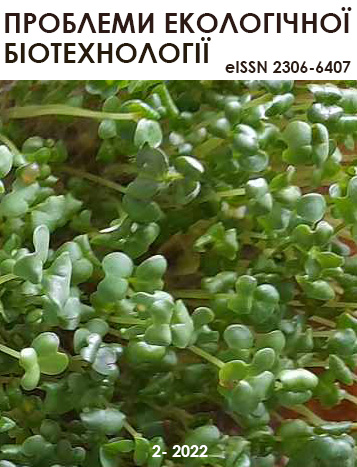The prospects of the microbial sulfate reduction for polymetallic wastewater treatment
DOI:
https://doi.org/10.18372/2306-6407.2.17171Keywords:
sulfate reduction, wastewater, purification, heavy metalsAbstract
Microbial dissimilatory sulfate reduction is a promising methabolic pathway to solve the problem of polymetallic wastewater treatment. The process is based on the application of sulfates by microorganisms as the terminal electron acceptor. As a result, sulfates are reduced to sulfides, which precipitate a wide range of divalent cations in the form of insoluble metal sulfides. For this purpose, highly soluble Na2SO4 and slightly soluble gypsum CaSO4 were studied as electron acceptors. Starch (potato) was used as electron donors. As a result of the study, the process of sulfate reduction was determined to be quite active regardless of the source of sulfates. It took 21 days for the complete precipitation of Co2+ and Ni2+ in the medium with potatoes using Na2SO4. Using CaSO4, the precipitation occurred on the 19th day of cultivation. At the same time, hydrogen was released during cultivation, the share of which was 25 – 40 % in the gas phase. Thus, the effectiveness of the sulfate reduction process using low-soluble gypsum for the precipitation of divalent metals, in particular Co2+ and Ni2+, has been experimentally confirmed. This approach can be used as a basis for the development of new biotechnologies for the treatment of wastewater contaminated with heavy metals with the simultaneous treatment of ecologically hazardous compounds and the production of green energy carrier.
References
Yuhu Luo Environmental problems in the mining of metal minerals // IOP Conf. Ser.: Earth Environ. Sci — 2019. — Vol. 384. http://dx.doi.org/10.1088/1755-1315/384/1/012195
Brahmacharimayum B., Mohanty M.P., Ghosh P.K. Theoretical and Practical Aspects of Biological Sulfate Reduction: A Review // Water and Wastewater Treatment. — 2019. — Vol. 21(2). — P. 222–244. https://doi.org/10.30955/gnj.002577


